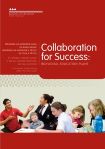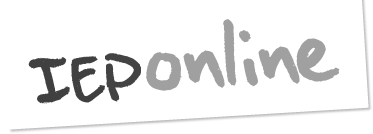IEP guidelines
Mehemea ka moemoeā ahau, ko ahau anake.
Mehemea ka moemoeā a tātou, ka taea e tātou.
If I dream, I dream alone.
If we all dream together, we can succeed.
Te Kirihaehae Te Puea Hērangi
(1883–1952), Māori leader
Purpose

Collaboration for Success: Individual Education Plans replaces the 1998 Individual Education Programme (IEP) Guidelines serves as a compact reference to current New Zealand research, policy, and effective practice in supporting students with special education needs.
This website provides a collection of tools, tips, and templates to support IEP teams in collaborating for success.
Get a copy of Collaboration for Success: Individual Education Plans
- Order a print version from Down the Back of the Chair.
- Download the PDF
Collaboration for Success: Individual Education Plans (PDF, 3 MB)
With thanks
The Ministry of Education thanks everybody who contributed to the revision of the Ministry of Education Individual Education Programme (IEP) Guidelines (1998).
In particular, the Ministry would like to thank the sector advisory group: Tinirau Barlow, Anne Best, Donna Boniface, Erin Cairns, Jann Carvell, Jane Chapman, Sally Direen, Sonia Glogowski, Rose Hague, Julie John, David Kennedy, Gary McClintock, Missy Morton, Tom Parsons, Judith Shearer, and Christine Zander, whose advice and guidance have been invaluable.
This resource is for anyone involved in developing or implementing individual education plans (IEPs) to support students with special education needs.
The audience includes students, parents/caregivers, whānau/family, hapū, iwi, school staff (including teachers, teacher aides), school leaders, specialists, and community members.
Māori-medium schools might adopt pathways different from those suggested in this resource, in accordance with their kaupapa.
“Cultural differences in the perception of special needs” may be a factor (Bevan-Brown, 2001, page 6). However, many of the principles, especially that of collaboration, are likely to be relevant. Suggestions for collaborating with Māori communities are included in section 8.
References
List of references used in developing Collaboration for Success: Individual Education Plans:
Bevan-Brown, J. and W. (2001). How Are Māori Learners with Special Needs Faring? Paper presented at the Australian Association for Research in Education International Conference, Australia, December 2001. Palmerston North: Massey University.
Ministry of Education (1998). Individual Education Programme (IEP) Guidelines. Wellington: Ministry of Education.
Ministry of Education (2007). The New Zealand Curriculum. Wellington: Learning Media Limited.
Ministry of Education (2008). Te Marautanga o Aotearoa. Wellington: Learning Media Limited.
Ministry of Education (2009). Pasifika Education Plan 2013–2017. Wellington: Ministry of Education.
Ministry of Education (2009 revision). The National Administration Guidelines.
Ministry of Education (2010). Assessment for Learning.
Ministry of Education (2011). Ministry of Education Position Paper: Assessment. Wellington: Ministry of Education.
Mitchell, D., Morton, M., and Hornby, G. (2010). Review of the Literature on Individual Education Plans: Report to the New Zealand Ministry of Education. Christchurch: College of Education, University of Canterbury.
Wilkie, M., Berryman, M., Himona, T., and Paul, T. (2001). Matauranga Motuhake. Wellington: New Zealand Council for Educational Research. Retrieved from Matauranga Motuhake.

